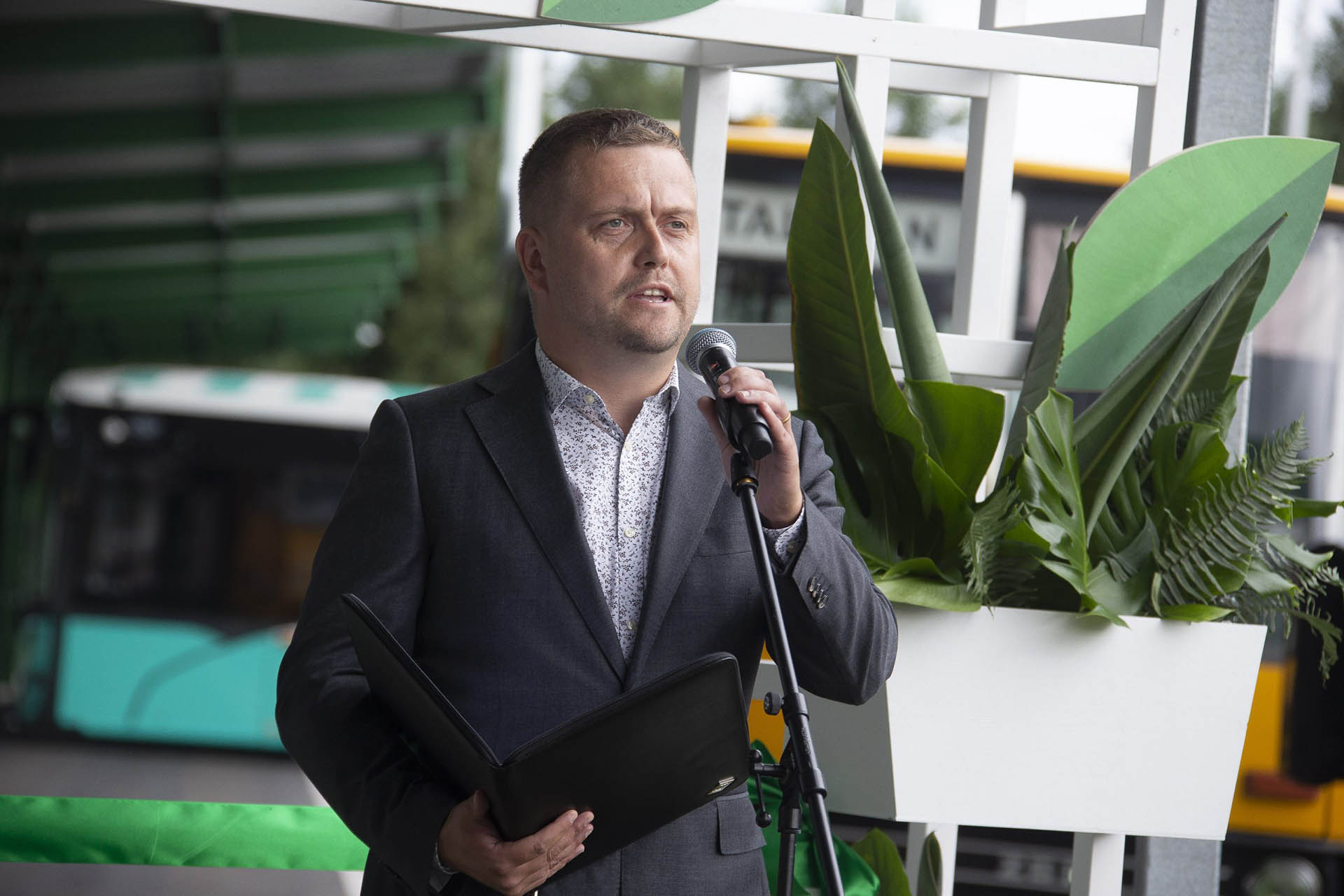Today, at the Public Transport Vision Conference “Public Transport in 2035” in Tallinn, representatives of eco-friendly technologies discussed how to transition to renewable fuel-based systems. While options abound, transport and energy sector experts agreed that regulatory certainty is essential, as investing in renewable fuel-based transport cannot be based on wishful thinking.
Deniss Boroditš, Chairman of the Board at AS Tallinna Linnatransport, emphasized that although Estonia lags behind Europe in renewable fuel adoption, the European Union’s renewable energy targets for the transport sector are realistic but depend on how well European and local government measures support swift transition processes.
“The transition to gas-powered buses has made Tallinn’s public transport the largest compressed gas consumer in Estonia’s transport sector. Today, 200 gas-powered buses serve the capital, with 150 more to be added next year. Notably, the planned fleet of 350 gas buses will consume around 200 GWh of compressed gas annually. By comparison, Estonia’s total biomethane production in 2020 was 97.4 GWh, rising to around 150 GWh this year. Clearly, demand outstrips supply. We hope the increased demand will encourage producers to ramp up production, fostering competition and thereby enhancing access to environmentally friendly fuels,” Boroditš added.
Henry Uljas, Chairman of the Board of Bioforce Infra OÜ, which today opened the region’s largest compressed gas station on Kadaka Road, noted that one of their main priorities is to increase biomethane’s share in the transport sector. Bioforce Infra plans to expand biomethane’s share in their portfolio, directing it toward AS Tallinna Linnatransport’s gas buses. “The recent climate conference in Glasgow also emphasized the importance of reducing methane emissions, and biomethane plants provide one of the best solutions in agriculture. We plan to work with partners to establish more plants in Estonia and further promote renewable fuel adoption. Biomethane makes it possible to repurpose waste and agricultural byproducts that would otherwise go unused, representing a highly green and sustainable approach to resource management,” Uljas explained.
Addressing other renewable fuels, Boroditš pointed out that no company in Estonia currently offers solutions for immediate, reliable, and passenger-satisfying alternative technologies.
“Alongside testing electric buses, TLT is also closely monitoring developments in hydrogen-fuelled buses, and when the technology reaches the required standard, TLT is ready to initiate pilot projects. However, hydrogen transport must become price-competitive with gas and electric buses for both fleet and fuel costs,” Boroditš said, adding that transitioning to hydrogen fuel will require close collaboration with the government, leveraging city budgets and European Union green transition funds. As the technology advances and the hydrogen market activates, Tallinn is likely to consider hydrogen technology for public transport.
Before implementing electric or hydrogen technology, there must be long-term agreements across Europe, Estonia, and local regions on how to advance the system comprehensively and at a consistent pace,” Boroditš stressed.
He expressed hope that the Estonian government will identify appropriate support measures to facilitate the transition to renewable fuels.
“With strong national backing, companies can attract the necessary investments—crucial for development,” Boroditš said.
Sven Parkel, Head of the Estonian Hydrogen Cluster, pointed out that Estonia can contribute to climate neutrality in both the transport and energy sectors through green hydrogen technology adoption. This requires a comprehensive understanding of how hydrogen technologies affect supply chains and the operational logic of these sectors.
“Green hydrogen enables a comprehensive reorganization of energy supply systems prompted by climate targets. The goal is not just to transition one sector to a new energy source. We can stabilize fluctuating wind and solar energy prices, making hydrogen produced during low-cost electricity periods a high-value industry, thus supporting the shift away from fossil fuels. The transition to hydrogen technology offers opportunities to join European value chains and bring foreign investment and innovation opportunities to Estonia,” Parkel explained. He added that the transport sector could begin transitioning to hydrogen technology through hydrogen economy measures facilitated by the Ministry of Economic Affairs and the Ministry of the Environment, establishing comprehensive solutions from production to consumption. “This would be Estonia’s first, but critically important, step in the competitive adoption of hydrogen technologies,” Parkel emphasized.
Panellists noted that the best energy system is a diversified system, meaning Estonia should not limit itself to one renewable fuel solution. Instead, it should favour a robust energy system where various sources complement each other to ensure security of supply.
